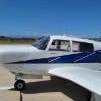Requesting a special VFR
-
Members Online
- madjano
- bigmo
- eman1200
- TangoTango
- Mahsine Parthime
- T. Peterson
- EricJ
- MikeOH
- dzeleski
- Paul Thomas
- TheAv8r
- raymondscott0321
- Fly Boomer
- Ibra
- midlifeflyer
- bixmooney
- CCAS
- AH-1 Cobra Pilot
- Geoff
- N442PT
- exM20K
- 1980Mooney
- 231DF
- jcolgan
- AJ88V
- Nico1
- MattCW
- Flitton
- Dgeyer
- Jetdriver
- McMooney
- rahill
- TCC
- GeeBee
- LANCECASPER
- BlueSky247
- richardbrochu27
- donkaye
- V1Rotate
- tony
- Vulcan81
- Rmnpilot
- Marc_B
- 201er
- Bolter
- jsclafani
- Philofficer
- 7.Mooney.Driver.0
- Cleared to land
- buddy
- N201MKTurbo
- NickG
- Cvoigtlaender
- Ryan ORL


Recommended Posts
Join the conversation
You can post now and register later. If you have an account, sign in now to post with your account.